| SOUTHEASTERN CARIBBEAN BIRDS PHOTO GALLERY |
| Trinidad and Tobago Field Naturalists' Club Southeastern Caribbean Bird Alert Trinidad and Tobago Rare Bird Committee |
| IDENTIFICATION ESSAY |
| Green Heron (Butorides virescens) and Striated Heron (B. striatus): Page 2 of 2 Immatures Adults |
| Fig. 4. Adult or subadult voucher specimens from the U. S. National Museum of Natural History used by Payne (1974) to score neck coloration of Butorides on a hybrid index scale (from left to right) of 1-9. Grey-necked individuals at left are Striated Heron and rufous-necked individuals at right are Green Heron. Individuals with neck coloration scores of 1-4 occur throughout the range of Striated Heron, whereas individuals with neck scores of 6-9 occur throughout most of the range of Green Heron. Specimen 5 in center appears intermediate and is probably a hybrid. Such individuals occur only in the hybrid zone and in the pale race of the Green Heron (bahamensis) in the Bahamas. Individuals with a score of 4 or 6 in the hybrid zone may also represent hybrids. These specimens were collected in Panamá and Colombia. Photo © by Floyd Hayes, published in Hayes (2002). |
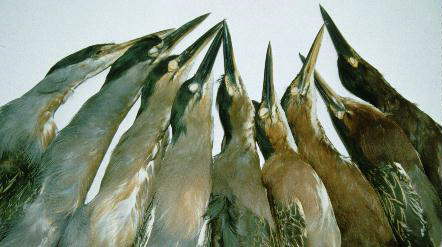 |
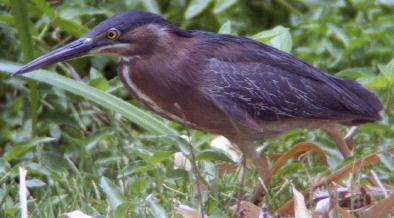 |
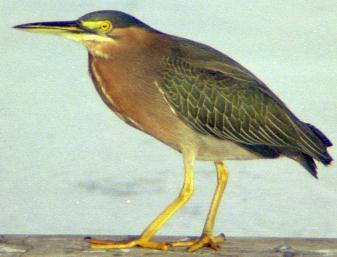 |
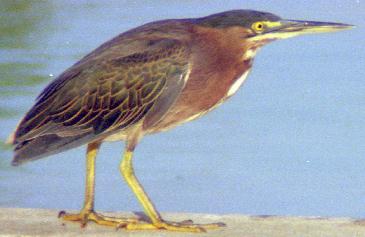 |
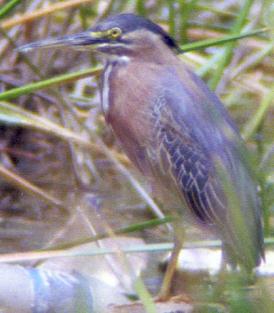 |
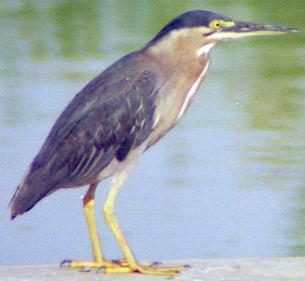 |
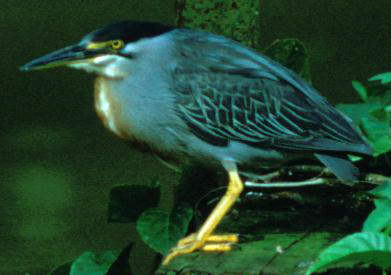 |
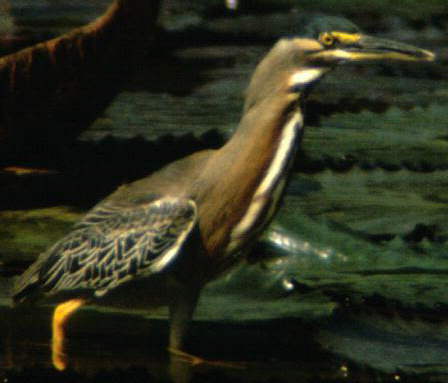 |
| Fig. 5. Note the pale grey sides of the neck (scored as 1) and the rufous-edged white stripe on the foreneck of this Striated Heron at Pointe-a-Pierre, Trinidad, 7 October 2000. This is the most commonly occurring neck coloration of Striated Heron throughout its range. Photo © by Floyd Hayes, published in Hayes (2002). |
| Fig. 9. A brown-necked Striated Heron, possibly the same individual in Figs. 7 and 8 above, at Pointe-a-Pierre, Trinidad, 11 August 2001. Note the distinctly greyer hindneck (scored as 3 > 4), which is typical of many brown-necked Striated Herons. However, the possibility of hybrid origin cannot be ruled out. Photo © by Floyd Hayes, published in Hayes (2002). |
| Fig. 11. A brown-necked Striated Heron or possible hybrid (scored as 3 < 4) at the Bon Accord Sewage Ponds, Tobago, 6 August 2002. Note the heavily worn plumage lacking the pale wing feather margins. Photo © by Floyd Hayes. |
| Fig. 10. A brown-necked Striated Heron or possible hybrid (scored as 4) at Speyside, Tobago, 5 August 2002. Photo © by Floyd Hayes. |
| Fig. 12. A bright rufous-necked Green Heron (scored as 6) at the Bon Accord Sewage Ponds, Tobago, 6 August 2002. Photo © by Floyd Hayes. |
| Fig. 13. A dark rufous-necked (scored as 7) Green Heron at the Bon Accord Sewage Ponds, Tobago, 7 August 2002. Photo © by Floyd Hayes. |
| Fig. 14. A dark rufous-necked Green Heron (scored as 8) at Speyside, Tobago, 5 August 2002. Note the greyish patch of feathers toward the rear of the face, which occurred on both sides of the bird, apparently caused by moulting feathers exposing the greyish bases of adjacent feathers. Photo © by Floyd Hayes. |
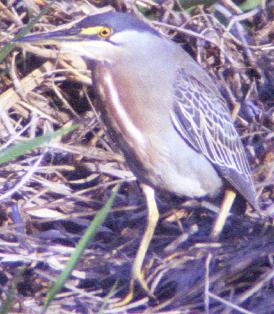 |
| Fig. 6. Note the slight brown wash on the sides of the neck (scored as 2) in this Striated Heron at Caroni Rice Fields, Trinidad, 19 April 2002. Photo © by Floyd Hayes. |
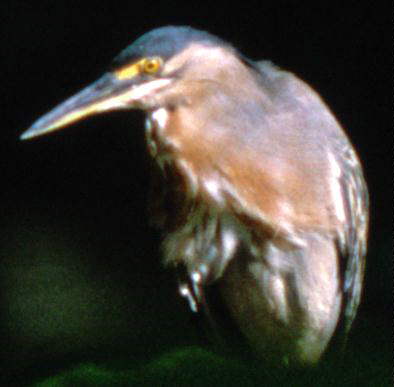 |
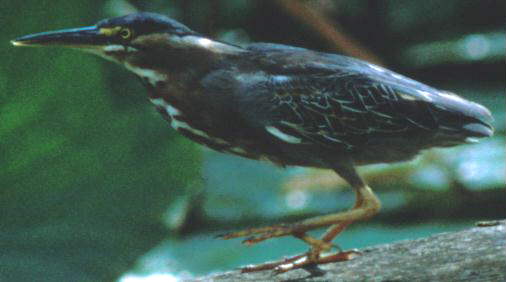 |
| Figs. 7 and 8. Two photos of a Striated Heron illustrating how lighting can effect the perceived colour of the neck. At right the bird appears to have a dark rufous neck, suggestive of a Green Heron, but at left the grey wash is obvious in the sides and rear of the neck (scored as 3 > 4), betraying its identity as a Striated Heron. This bird was photographed at Pointe-a-Pierre, Trinidad, 7 October 2000. Photo © by Floyd Hayes. |